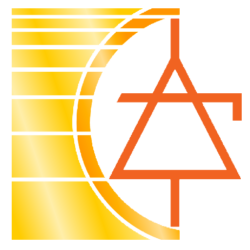The founder of the laboratory Professor Vladimir M. Tuchkevich had been working at the Physical-Technical Institute during several decades. Since 1949 he was a leader of the semiconductor electronics sector in the laboratory headed by Prof. Dmitry Nasledov. From 1953, that sector gradually tended toward power electronics (s. article in Physics-Uspekhi, therein pp. 150-151).
In 1958, Prof. Tuchkevich’s sector was separated into an independent unit for first times interchangeably classified as “autonomous sector” or “laboratory”, later only as “laboratory”. Henceforth, traditionally, its research activities are primarily focused on the solid-state power and pulse devices although other directions are also represented.
Igor Grekhov, a future successor of Prof. Tuchkevich and academician, joined the laboratory in 1962 after several career years in the industry. From early 1960s, he became one of the principal members of the team (led by V.M. Tuchkevich) whose work provided a basis for establishing the high current semiconductor device components industry in the USSR. This allowed a drastic reduction of energy consumption in power supply applications.
The research efforts resulted in invention of the new-type high-voltage pulse power semiconductor devices covering the duration range of the switched electric pulses from hundreds microseconds to dozens of picoseconds. These devices have found numerous applications for power lasers, accelerators, wide-band radar engineering and many other research and industrial technologies.
The major silicon devices developed at the laboratory are:
– reversely switched dynistors (RSD), microsecond range;
– drift step recovery diodes (RSRD), nanosecond range;
– silicon avalanche sharpening diodes (SAS), subnanosecond range;
– field-controlled integrated thyristors, microsecond range.
Apart from Si devices, the laboratory is performing research and development of the SiC high-voltage and pulse power devices.
Other topics of solid-state physics such as high temperature superconductivity, ferroelectric (PZT) memories, tunneling MOS structures, optoelectronics of porous Si were also studied in the laboratory.

